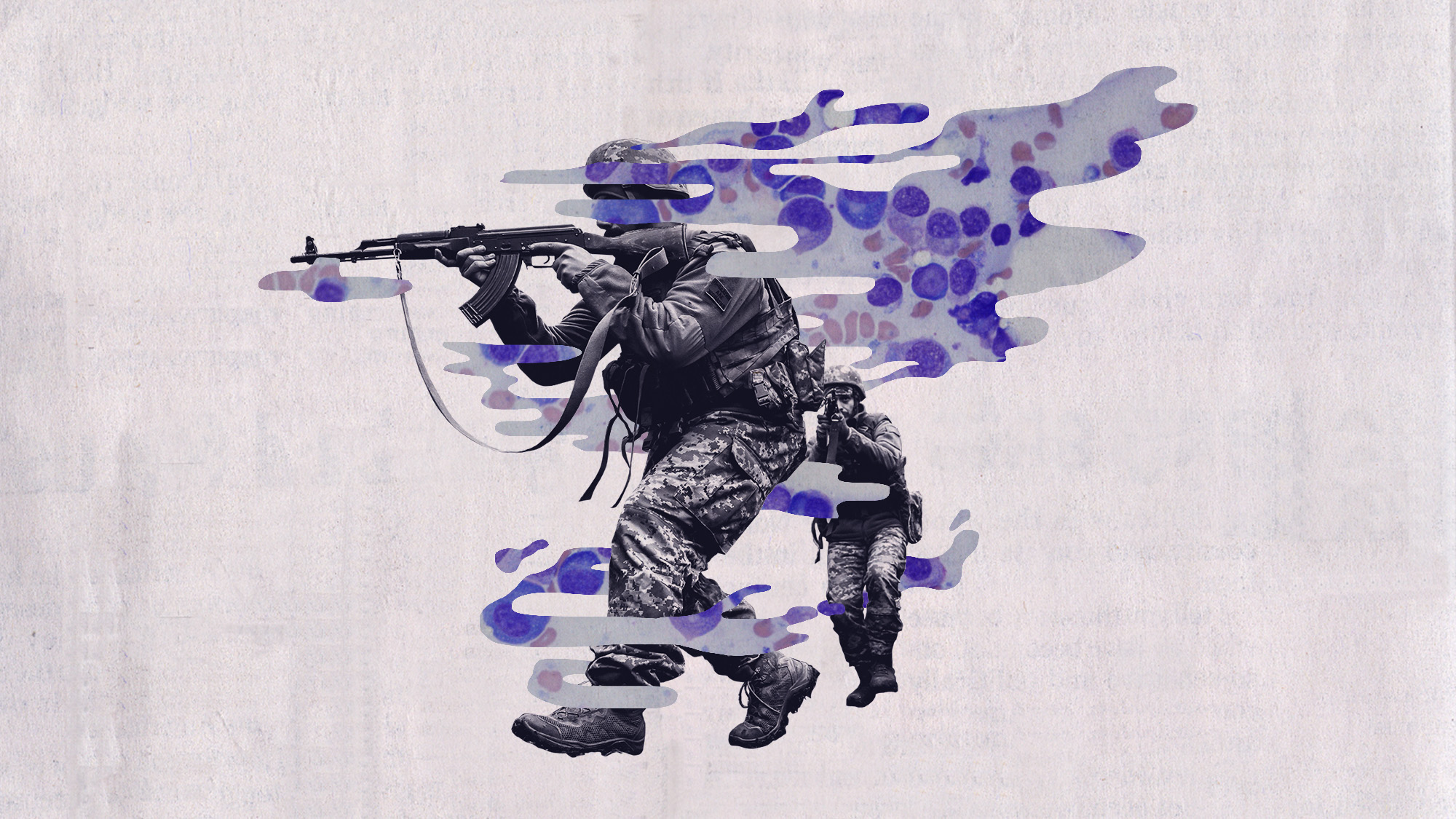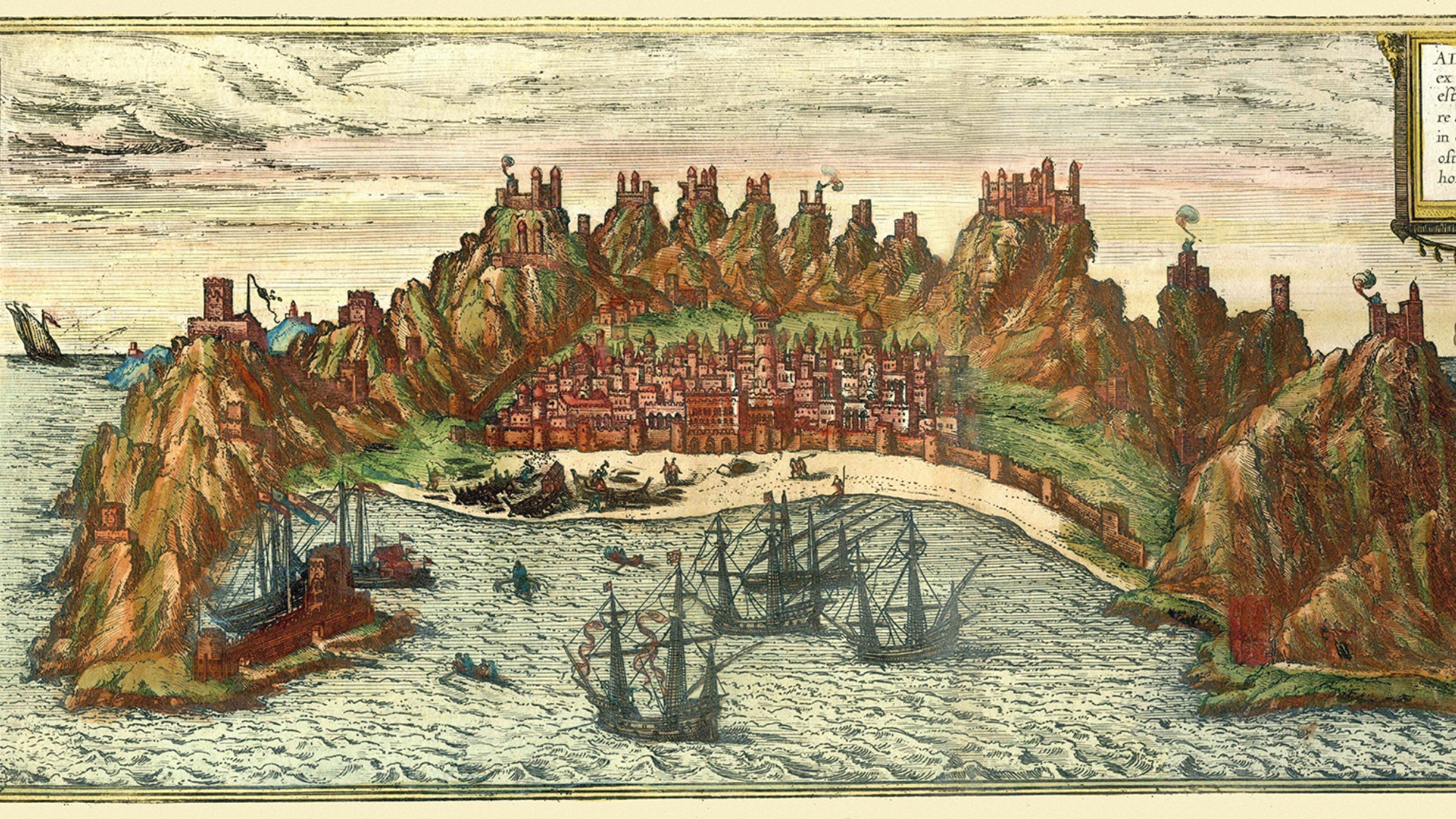Exhibit of the week: Chagall: Love, War, and Exile
The works in this show should put to rest the myth that only early Chagall is worth looking at.
The Jewish Museum, New York City,
Through Feb. 2
Marc Chagall could be deadly serious, said Lance Esplund in Bloomberg.com. When fascism took hold in Europe in the 1930s, Chagall, one of many Eastern European Jews who’d immigrated to France after the Russian Revolution, adopted a far more somber tone than he’d been known for. The paintings he created across the next decade, through World War II and beyond, are often “dark and fractured.” Where there’s light, it feels “cold and harsh, suggesting blood and fire,��� and forms “feel frozen, bludgeoned, rough-hewn.” Beginning in 1939, Chagall was a man living in exile from his adopted Paris, and his wife died suddenly in New York City while war was still raging in Europe. But knowledge of these biographical facts doesn’t overshadow the 53 paintings and drawings in this show. “Chagall was too great an artist to have let the specificity of his life overcome the universal demands of art.”
The Week
Escape your echo chamber. Get the facts behind the news, plus analysis from multiple perspectives.

Sign up for The Week's Free Newsletters
From our morning news briefing to a weekly Good News Newsletter, get the best of The Week delivered directly to your inbox.
From our morning news briefing to a weekly Good News Newsletter, get the best of The Week delivered directly to your inbox.
Chagall chose an unlikely symbol of Jewish suffering during the war, said Robin Cembalest in ArtNews.com. Fully 20 of the works in this “startling and provocative show” depict Jesus, generally in crucifixion scenes. Though Chagall worried that he shouldn’t have been adopting Christian iconography, he was far from the only Jewish artist of the time who did so. Chagall, like many others, chose to depict the suffering of the most famous of Jewish prophets as a way to call attention to the suffering of all Jews during the war. But he also appears to have been attracted to Jesus’ qualities as “a rebel, a martyr, and a creative spirit.” In some paintings, like 1941’s Descent From the Cross, “the man on the cross is the artist himself.”
The best works here “have the potential to convert viewers who are put off by Chagall’s sappier tendencies,” said Karen Rosenberg in The New York Times. Pablo Picasso once said that “when Matisse dies, Chagall will be the only person left who understands what color really is,” and this show argues his case. The curators made the unfortunate choice of tacking on a happy ending, filling the last gallery with moony paintings that the widowed artist made after falling in love again. “Yes, an exhibition called “Chagall: War and Exile” would have been a tougher sell, but it would have shown a thornier side of an artist known for sentimental paintings of floating couples, flying goats, and fiddlers on the roof.” Yet even in those final works, “color has a manic intensity that sometimes cuts against the theme of contentment.” It’s all the evidence you should need to put to rest the myth that only early Chagall is worth looking at.
A free daily email with the biggest news stories of the day – and the best features from TheWeek.com
-
 Antibiotic resistance: the hidden danger on Ukraine’s frontlines
Antibiotic resistance: the hidden danger on Ukraine’s frontlinesUnder The Radar Threat is spreading beyond war zones to the ‘doorstep’ of western Europe
-
 ‘Capitalism: A Global History’ by Sven Beckert and ‘American Canto’ by Olivia Nuzzi
‘Capitalism: A Global History’ by Sven Beckert and ‘American Canto’ by Olivia NuzziFeature A consummate history of capitalism and a memoir from the journalist who fell in love with RFK Jr.
-
 Who will the new limits on student loans affect?
Who will the new limits on student loans affect?The Explainer The Trump administration is imposing new limits for federal student loans starting on July 1, 2026